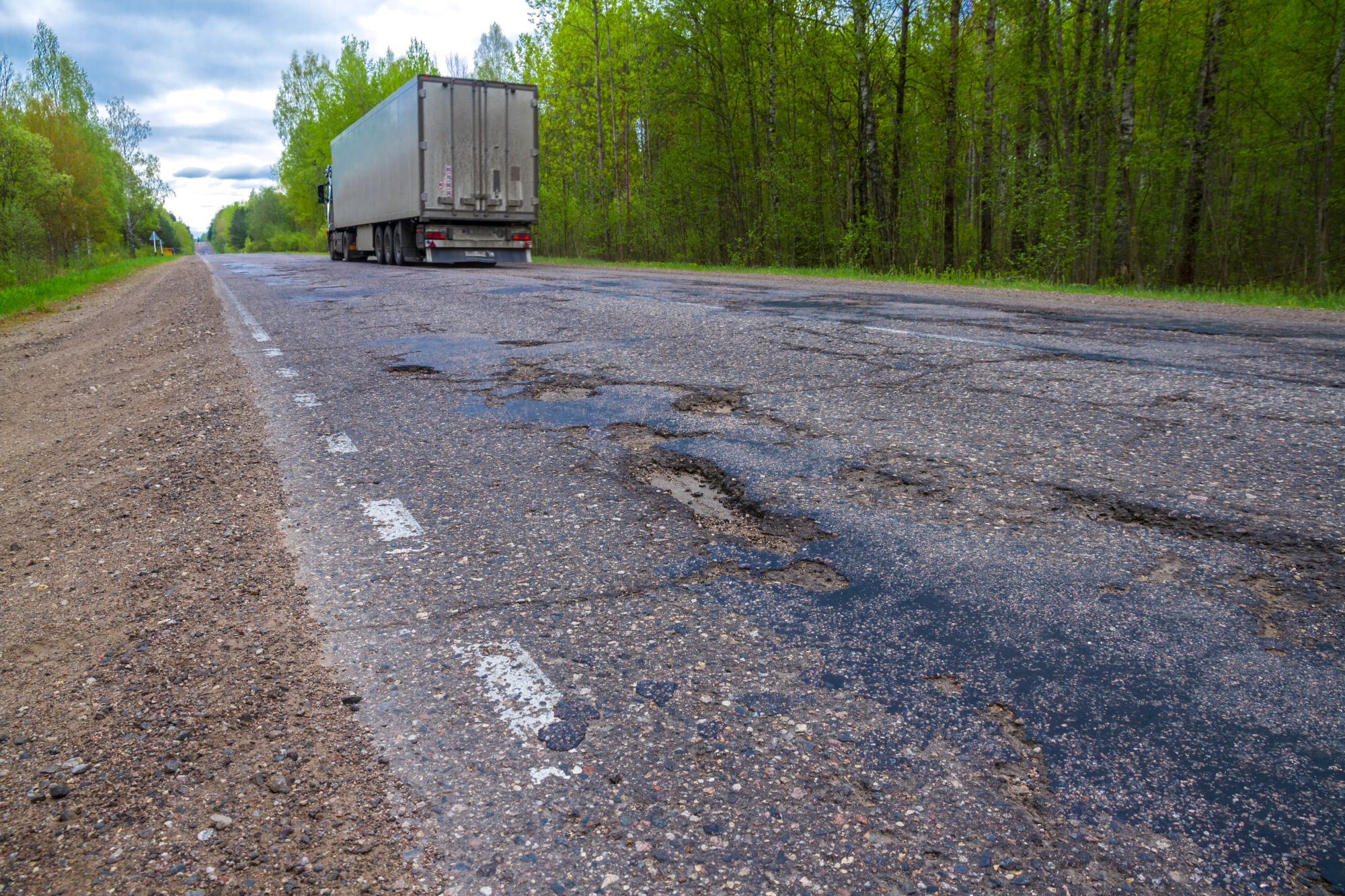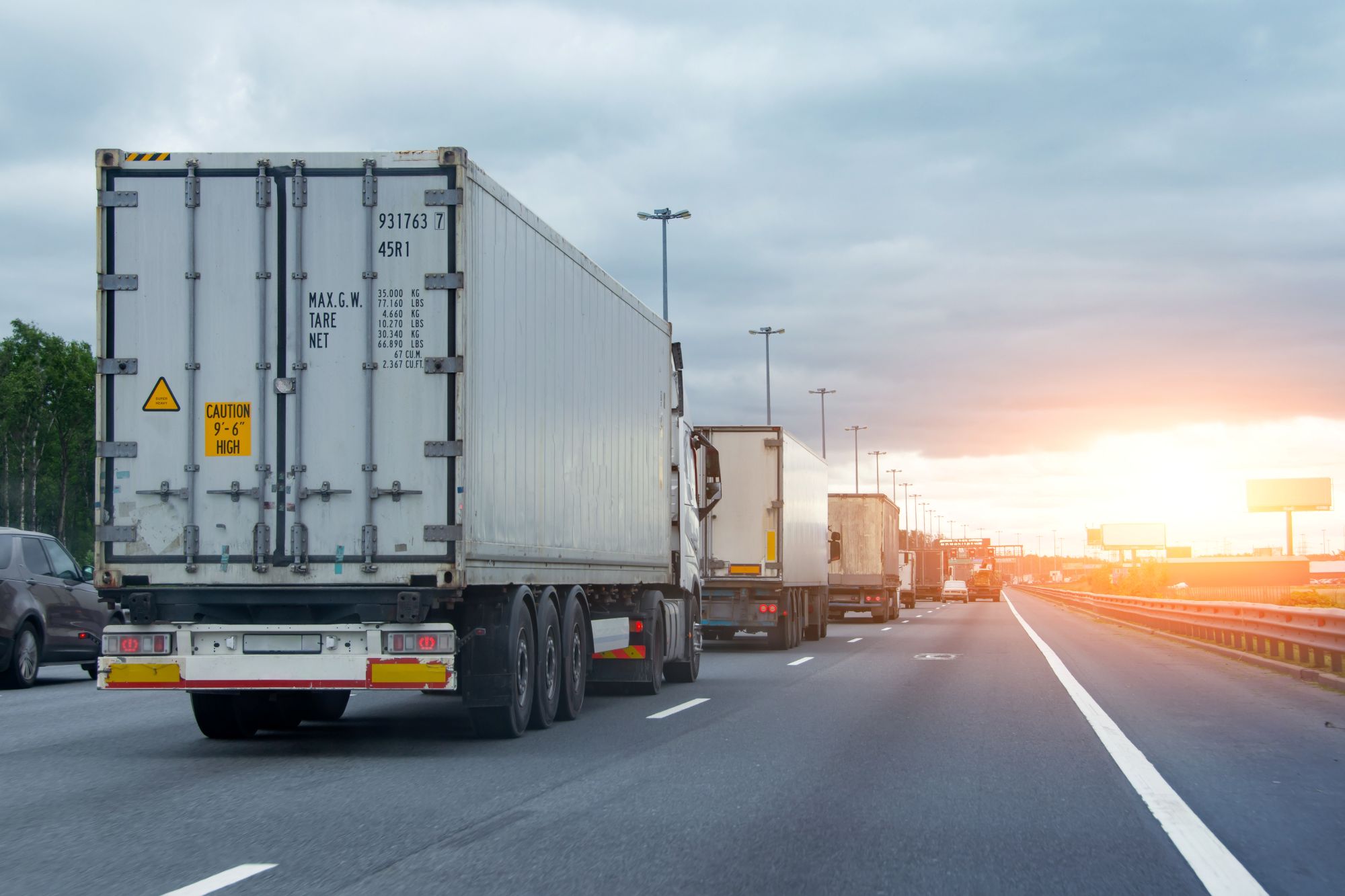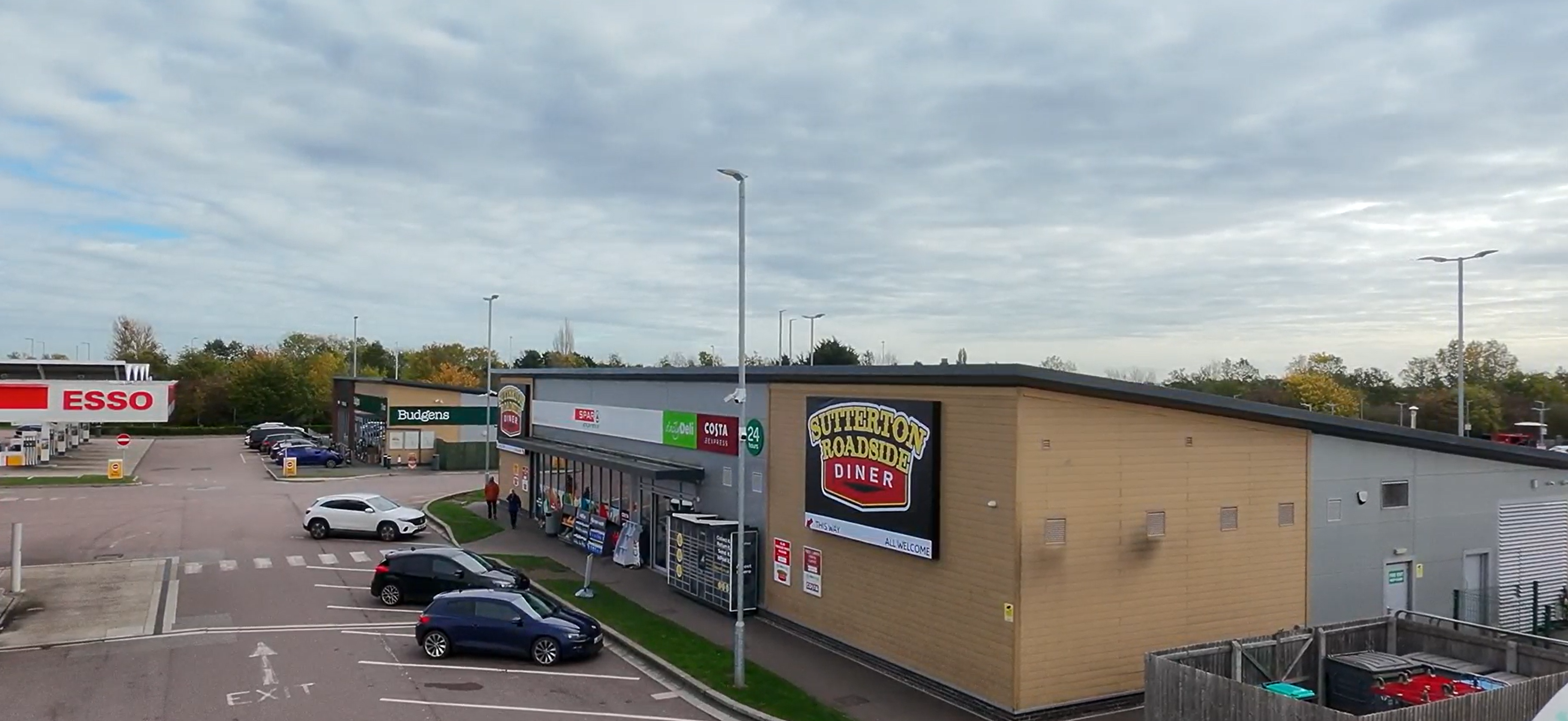
Guest
Jak brytyjskie fundusze infrastrukturalne mogą wpłynąć na branżę mobilności
Utworzony: 02.07.2025
•
Aktualizacja: 03.07.2025
Po latach nierównomiernych inwestycji i rosnących korków, rząd Wielkiej Brytanii zobowiązał się do wydania ponad 700 miliardów funtów na infrastrukturę w ciągu następnej dekady - z czego znaczna część przeznaczona jest na krajowe drogi. Od nowych korytarzy transportowych po najnowocześniejsze cyfrowe systemy ruchu drogowego, wpływ 10-letniej strategii infrastrukturalnej na kierowców komercyjnych i szerszą branżę mobilności może być transformacyjny.
Drogi osiągają punkt krytyczny
Drogi to tylko jeden z elementów brytyjskiego transportu, ale to właśnie nimi przewożona jest zdecydowana większość towarów. Według danych rządowych, 81% krajowego transportu towarowego i 75% importu i eksportu odbywa się drogami, co czyni je kręgosłupem brytyjskiej logistyki i gospodarki.
Pomimo tego, że stanowią one nieco ponad dwa procent sieci drogowej Wielkiej Brytanii pod względem długości, Strategiczna Sieć Drogowa (SRN) obsługuje 34% wszystkich przejazdów drogowych - w tym wiele najbardziej wrażliwych czasowo tras towarowych o dużym natężeniu ruchu. Dla kierowców z nich korzystających, ich stan i przepustowość mają bezpośredni wpływ na bezpieczeństwo, efektywność i wydajność dostaw.
Jednak dane Road Condition Index (RCI) pokazują, że około 24 500 mil - więcej niż jedna na każde 10 mil - sieci w Anglii i Walii prawdopodobnie będzie wymagać konserwacji w ciągu najbliższych 12 miesięcy.
Szereg niedawnych awaryjnych zamknięć mostów dodatkowo ujawniło, jak wrażliwa stała się sieć. W niektórych obszarach popękane konstrukcje wsporcze i beton sprzed dziesięcioleci stworzyły niebezpieczne warunki dla wszystkich użytkowników dróg - zwłaszcza dla samochodów ciężarowych, które często jako pierwsze muszą stawić czoła ograniczeniom masy lub wymuszonej zmianie trasy.
Rząd zareagował nowym funduszem w wysokości 1 miliarda funtów na naprawę i odbudowę niszczejących mostów, skrzyżowań i wiaduktów w ramach swojej strategii infrastrukturalnej. To mile widziany krok, który odzwierciedla rosnącą presję ze strony branży. Dla zawodowych kierowców może to oznaczać mniej objazdów, mniej nagłych ograniczeń i mniej czasu straconego na infrastrukturę, która nie nadaje się do nowoczesnej logistyki.
Bezpieczeństwo to jednak nie tylko unikanie katastrofalnych awarii. Chodzi również o długoterminową odporność - zapewnienie, że drogi, mosty i zatoczki są odpowiednio konserwowane, zanim staną się zagrożeniem. Ten odnowiony nacisk na konserwację sygnalizuje, że utrzymanie dróg może wreszcie zacząć odpowiadać skali, rozmiarowi i prędkości pojazdów, które są od nich zależne.

Problem wybojów
Podczas gdy głośne projekty dominują w ogłoszeniach, to często codzienny stan nawierzchni dróg ma największy wpływ na kierowców. Dla przewoźników wyboje są czymś więcej niż tylko uciążliwością - stanowią stałe zagrożenie dla bezpieczeństwa i kosztowne obciążenie.
Powtarzająca się ekspozycja na nierówne nawierzchnie zwiększa zużycie pojazdów ciężarowych, uszkadza opony i zawieszenie oraz przyczynia się do zmęczenia kierowcy. W niektórych przypadkach uszkodzenia spowodowane wybojami zmusiły pojazdy do zjechania z drogi w celu dokonania napraw awaryjnych, zakłócając dostawy i wpływając na umowy dotyczące poziomu usług.
Dla kierowców ryzyko jest osobiste. Próba ominięcia wybojów - zwłaszcza na wąskich lub ruchliwych drogach - może prowadzić do niebezpiecznych manewrów. Jeśli dodamy do tego złą pogodę, ograniczone oświetlenie lub napięte harmonogramy dostaw, stawka rośnie.
W ramach szerzej zakrojonych działań na rzecz infrastruktury, rząd przeznaczył 1,6 miliarda funtów (https://www.gov.uk/government/news/pm-tells-councils-to-prove-action-on-pothole-plague-to-unlock-extra-cash-and-reveals-48bn-for-major-roads) w ramach Planu Zmian na modernizację lokalnej infrastruktury, w tym wybojów, popękanych nawierzchni i zużytych jezdni. Celem jest doprowadzenie dróg do bezpieczniejszego, bardziej niezawodnego standardu - szczególnie na trasach o dużym natężeniu ruchu towarowego.
Nie rozwiąże to problemu z dnia na dzień, ale oznacza zmianę priorytetów - uznanie, że dobrobyt kierowcy zaczyna się od podstaw, a bezpieczna i wygodna podróż zależy od dobrze utrzymanych dróg.
Dla flot oznacza to mniej nieplanowanych napraw, niższe roszczenia ubezpieczeniowe i mniej przestojów. Dla kierowców oznacza to mniej wstrząsów, mniej stresu i jedną rzecz mniej do zmartwienia podczas długiej zmiany.
Niezawodna sieć
Dobrobyt kierowców jest głównym tematem współczesnych rozmów o transporcie. Długie godziny pracy, opóźnione rozkłady jazdy i nieodpowiednie udogodnienia zbierają swoje żniwo. Jednak najnowsze plany rządu dają nadzieję na bezpieczniejszą, lepiej połączoną sieć.
W całej Wielkiej Brytanii obiekty dla kierowców z trudem nadążają za popytem. Parkingi są często ograniczone, usługi są napięte, a wiele miejsc odpoczynku nie zapewnia komfortu i bezpieczeństwa - szczególnie w przypadku operacji długodystansowych. Dlatego też rząd [poprawia środowisko jazdy] (https://www.gov.uk/government/news/more-than-14-million-in-joint-government-and-industry-funding-to-boost-innovation-and-working-conditions-in-freight): bezpieczniejsze parkingi, lepsze udogodnienia socjalne i reformy planowania, aby przyspieszyć rozwój nowych miejsc.
Jednocześnie przyspieszają inwestycje w centra ładowania i tankowania ciężarówek elektrycznych i wodorowych. Na przykład firma Moto zobowiązała się do zainstalowania ponad 300 ładowarek elektrycznych dla pojazdów ciężarowych w 23 lokalizacjach przy autostradach, podczas gdy Ashford Truckstop jest przekształcany w główny węzeł ładowania dla transportu towarowego przez Kanał La Manche. W tych obiektach nie chodzi tylko o utrzymanie pojazdów w ruchu - chodzi o zapewnienie kierowcom bezpiecznych, dobrze wyposażonych miejsc do odpoczynku i naładowania akumulatorów.
Jeśli Twoi kierowcy szukają bezpiecznego miejsca na postój, nasza aplikacja intruck umożliwia im identyfikację i rezerwację postojów w Wielkiej Brytanii i Europie. Dowiedz się więcej i pobierz ją tutaj.

Koszt korków
Korki, nieprzewidywalne trasy i presja na dotrzymanie terminów dostaw przyczyniają się do stresu i zmęczenia kierowców - i sprawiają, że droga staje się bardziej niebezpiecznym miejscem.
Główne modernizacje infrastruktury, takie jak Lower Thames Crossing, A66 dualling i M60 Simister Island, mają na celu zmniejszenie zatorów i zmniejszenie ryzyka wypadków w niektórych z najbardziej znanych punktów zatorowych w Wielkiej Brytanii.
Ponadto nadal istnieje potrzeba wprowadzania narzędzi cyfrowych, które wspierają bezpieczniejsze i płynniejsze podróże. Alerty drogowe w czasie rzeczywistym, inteligentne systemy wykrywania i lepsze zarządzanie ruchem pomogą menedżerom flot i kierowcom szybko reagować na zakłócenia i zmieniać trasę w razie potrzeby.
Program dróg cyfrowych [National Highways' Digital Roads programme] (https://nationalhighways.co.uk/our-work/digital-data-and-technology/digital-roads/) już kładzie podwaliny pod inteligentną infrastrukturę, która może wcześniej wykrywać zagrożenia, inteligentniej zarządzać przepływem ruchu i przekazywać bardziej przejrzyste aktualizacje w czasie rzeczywistym.
Co to oznacza dla mobilności?
Krok naprzód dla mobilności i dobrobytu kierowców. Skoordynowany krajowy wysiłek na rzecz rozwiązania problemu zaległości infrastrukturalnych w Wielkiej Brytanii i modernizacji dróg w sposób przynoszący korzyści kierowcom, którzy polegają na nich najbardziej.
Prawdziwym testem będzie realizacja. Przekształcenie funduszy w namacalne ulepszenia będzie wymagało słuchania kierowców, uczenia się na podstawie doświadczeń z pierwszej linii i mierzenia sukcesu na podstawie tego, jak drogi się czują - a nie tylko ile kosztują.
"W tej nowej fali inwestycji nie chodzi tylko o skrócenie czasu podróży" - mówi Stuart Willetts, kierownik ds. rozwoju biznesu w Wielkiej Brytanii w SNAP. "Chodzi o zbudowanie sieci transportowej, która wspiera dobre samopoczucie kierowców i wydajność operacyjną oraz przejście na czystą mobilność. Nie możemy się doczekać, aby zobaczyć wyniki".
Chcesz zobaczyć, jak mobilność ewoluuje tam, gdzie jesteś?
Skorzystaj z mapy SNAP, aby znaleźć usługi i rozwiązania w pobliżu - bez względu na to, na jakiej drodze się znajdujesz.



